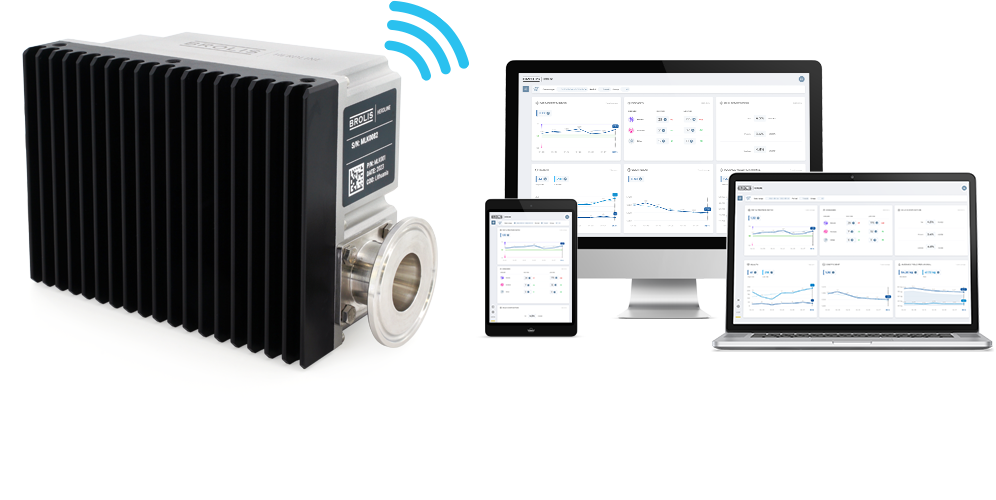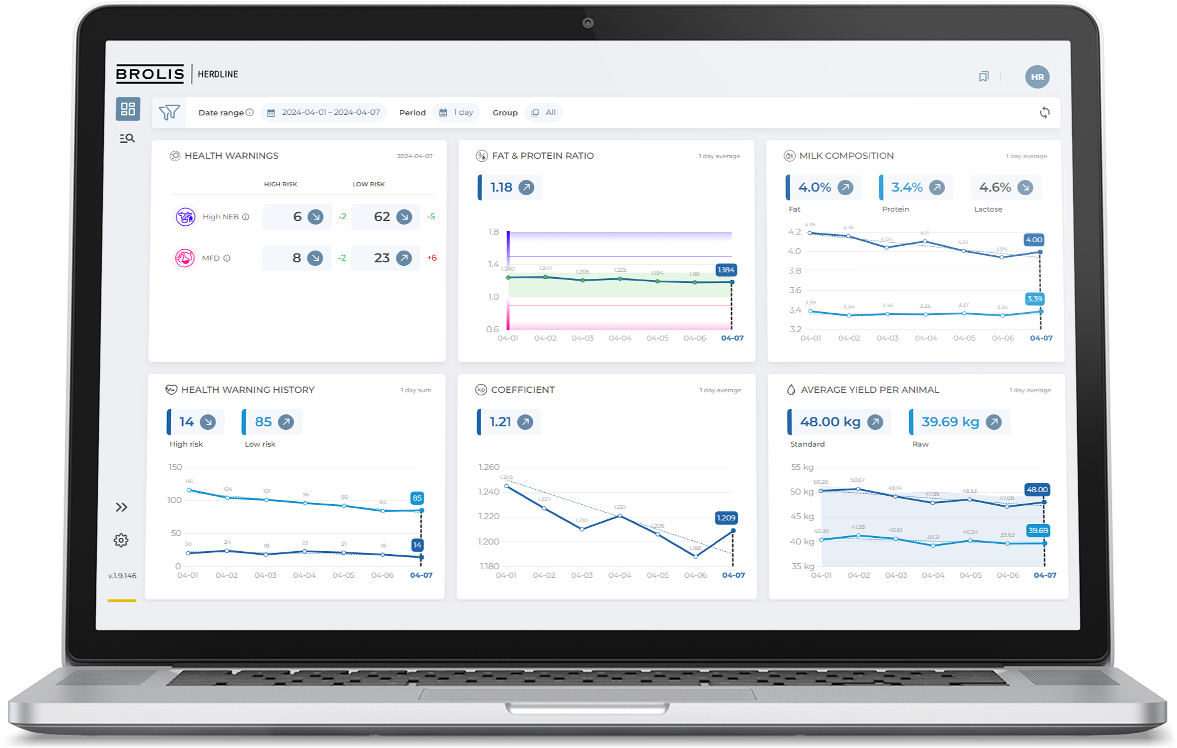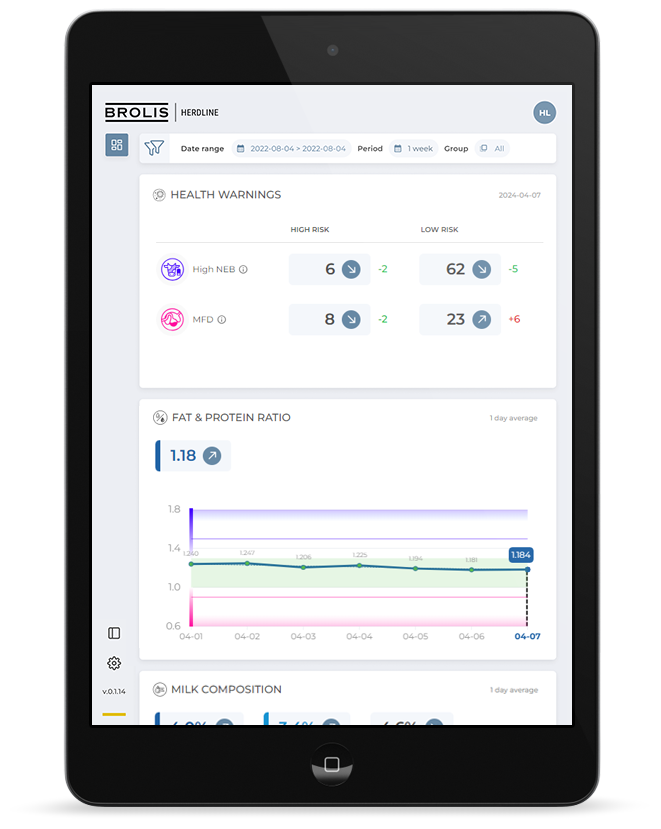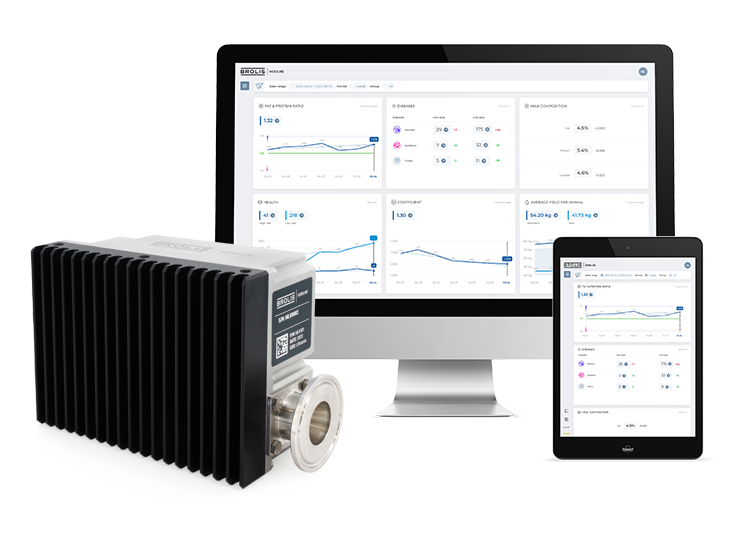In-line Milk analyzer




Why BROLIS HerdLine?
By detecting diseases and improving the quality of milk produced by your dairy cows, BROLIS HerdLine delivers greater control and oversight over your dairy herd. It’s also a powerful diagnostic tool that can help to improve selection of your most profitable cows.
Now you’ll be able to make decisions that increase farm productivity through improved milk quality, detect early stages of disease, and – significantly – reduce business inputs, boosting productivity and profitability.
Features and benefits



Technological advantage
 No milk sampling
No milk sampling
 No additional reagents
No additional reagents
 Automated cleaning procedure
Automated cleaning procedure
 Easy installation
Easy installation
 Remote monitoring
Remote monitoring
 Greenhouse gas emissions ⇩
Greenhouse gas emissions ⇩
Getting started
First, we take a look at the infrastructure on your farm to determine compatibility of our in-line milk analyzers with your existing milking equipment in order to maintain milk production without unnecessary interruptions.
We install the BROLIS HerdLine analyzer in each milking stall or milking robot on the line that carries the milk. We test the system to ensure everything works according to specification. Before long, your milking schedule will soon yield information-rich data that’s needed to run a modern farming operation.
You can view the summarized information about the health and productivity of your dairy herd on your computer screen, tablet or smartphone. Moreover, data can also be transferred to other farm software.







